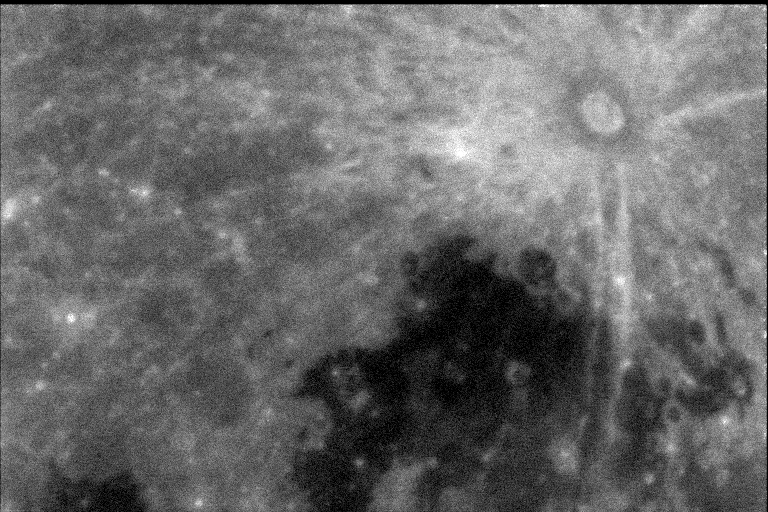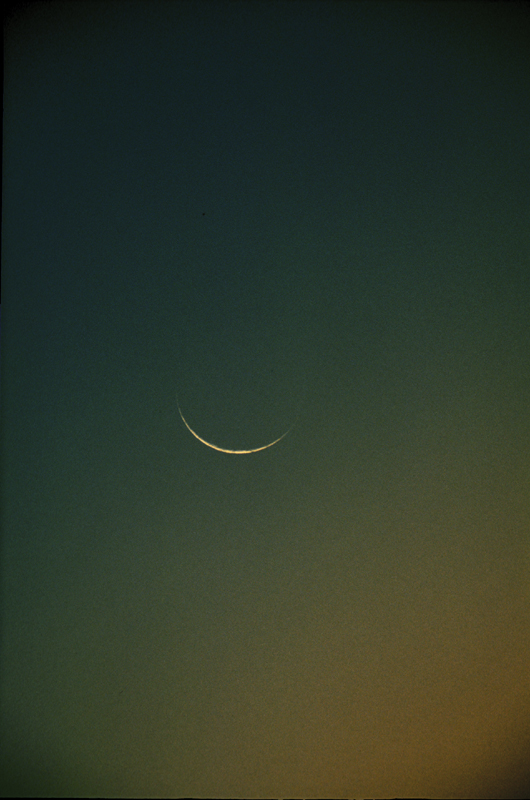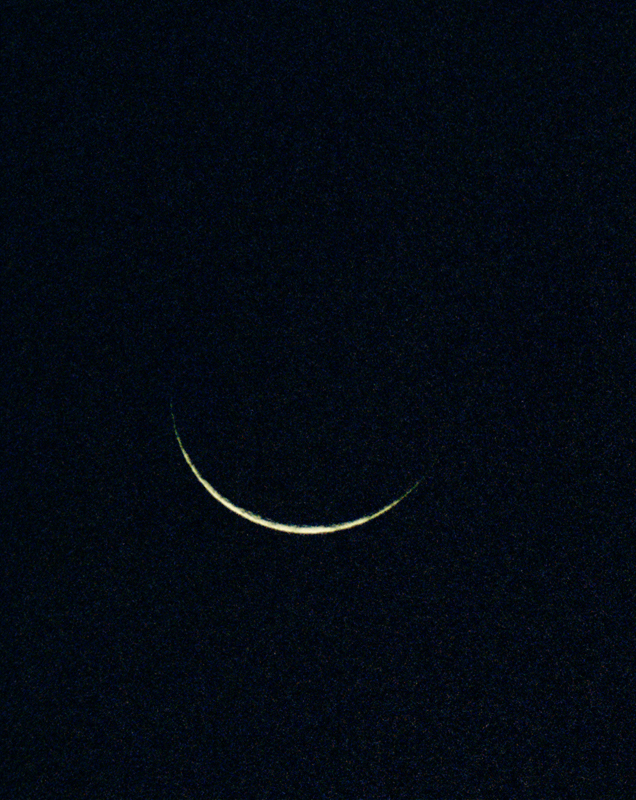
2 seconds exposure. Fuji Super HG II 400 film.
5" f/5 refractor at prime focus.

Usually when the Moon is between 1 and 2 days old, it becomes visible low in the western sky as a very thin cresent. Also at this time, the unlit portion of the Moon is also visible. This is known as "Earthshine" and is caused by sunlight reflecting of the Earth (which would be nearly full as seen from the Moon) onto the Moon and then back to the Earth. This light is surprisingly bright and through the telescope many of the lunar features not receiving sunlight are still easily visible, as shown in the image of below showing the crater Tycho .

In the photograph above, the bright orange star just below the Moon is 61 tauri, while to the right is the star 68 tauri. The photograph was taken on May 8, 1997 while waiting for the sky to become dark enough to photograph Comet Hale Bopp.

